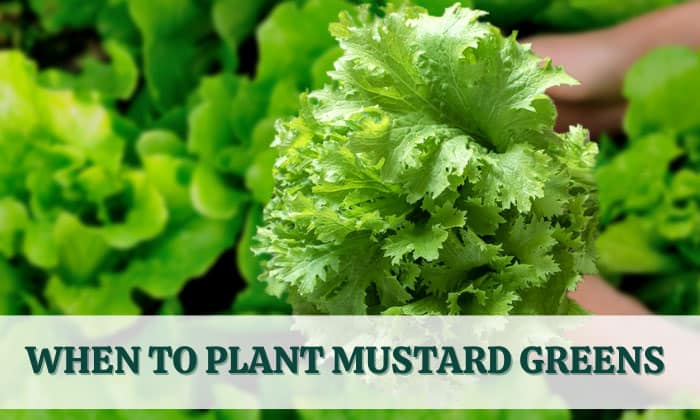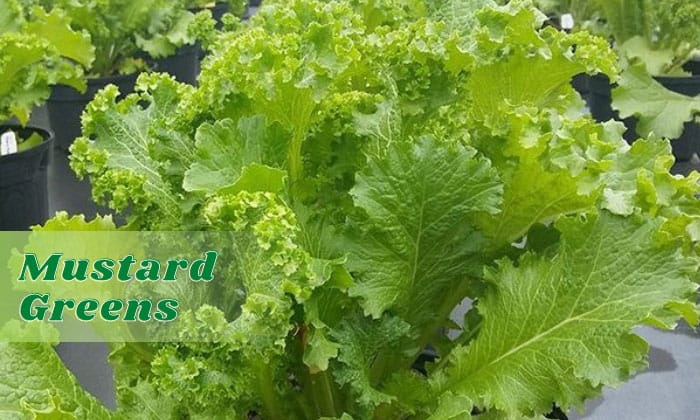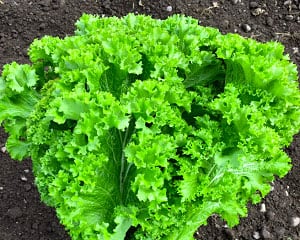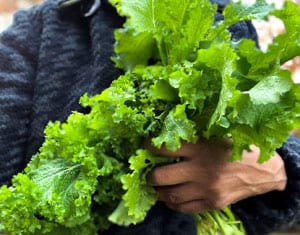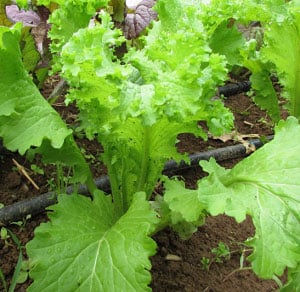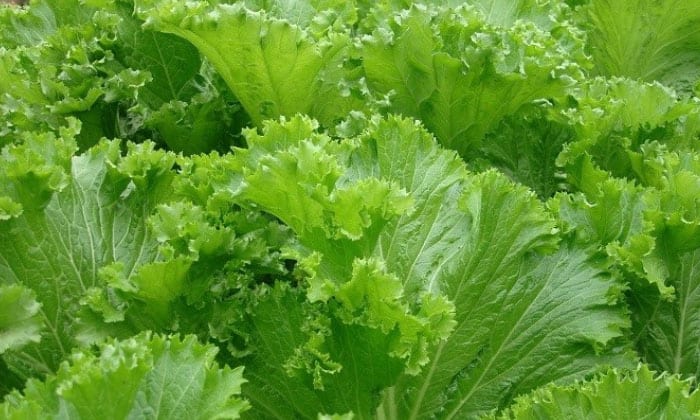Mustard greens add flavor to salads, sandwiches, and many other dishes. What’s more, they are excellent cover crops that help to prevent erosion and increase nutrients in the soil.
Considering all these benefits, it’s no surprise that gardeners want to know when to plant mustard greens.
In short, it’s best to do this task around January to April or July to October, depending on where you live and the frost dates of your locality. Read on for more details.
Table of Contents
When to Grow Mustard Greens
The best time to plant mustard greens is either spring or fall. Fall or winter is the preferable period for people in the south, such as those in Texas, Mississippi, in Louisiana, and Tennessee. These states have mild winters, and their hot summers don’t suit cool-season crops like these leafy greens as well.
As for gardeners in the north, spring is the mustard greens season, though people here can grow these vegetables in the fall also.
With these facts in mind, here are some general rules for narrowing down your planting dates:
- Plant outdoors two to four weeks before the last frost and eight weeks before the first frost.
Though it’s possible to seed mustard six weeks before the first winter frost, eight weeks are the safer option, since mustard greens take 40 days to mature and do not grow well if temperatures fall below 35℉.
- As for indoor seeding, you can start crops in pots a month to six weeks before the last frost and transplant the seedlings outside after it.
- If you want continuous harvests, planting mustard greens in succession every 10 to 21 days is possible. Just be mindful of freezing weather, as it can kill your Brassica.
For quick reference, check out the table below, which lists gardening dates for different hardiness zones. We’ll focus on zones 2 to 11, since these are where mustard grows best.
| Area | Grow outdoors in spring | Grow indoors in spring | Spring transplanting | Grow outdoors in fall |
| Zone 2 | April 17 – May 1 or April 24 – May 8 | April 3 – April 17 or April 10 – April 24 | May 16 – 23 | July 7 or 14 |
| Zone 3 | April 3 – April 17 or April 18 – May 2 | March 20 – April 3 or April 4 – April 18 | May 2 – 17 | July 14 or 21 |
| Zone 4 | March 27 – April 10 or April 14 – April 28 | March 13 – March 27 or March 31 – April 14 | April 25 – May 13 | July 27 or August 12 |
| Zone 5 | March 10 – 24 or April 2 – 16 | February 24 – March 10 or March 19 – April 2 | April 8 – 31 | August 18 or August 26 |
| Zone 6 | March 4 – 18 or March 24 – April 7 | February 18 – March 4 or March 10 – 24 | April 2 – 22 | August 22 or September 5 |
| Zone 7 | February 22 – March 8 or March 6 – March 20 | February 8 – 22 or February 20 – March 6 | March 23 – April 4 | September 3 or 20 |
| Zone 8 | February 13 – February 27 or February 28 – March 14 | January 30 – February 13 or February 14 – 28 | March 14 – 29 | September 12 or October 3 |
| Zone 9 | January 9 – 23 or January 31 – February 14 | December 26 – January 9 or January 17 – 31 | February 7 – February 29/ March 1 | September 30 or October 18 |
| Zone 10 | Frost is inconsistent or non-existent, which allows for planting pretty much year-round | |||
| Zone 11 | ||||
To use the information above, look up the hardiness zone of the city you’re living in. For instance, Athens in Georgia would fall within zone 8, while Grayson in KY would be in zone 6.
How to Plant Mustard Greens
Here are the basic steps for growing mustard greens.
Prepare the planting location
Ideally, the soil should be loamy with a pH of 6.5 to 6.8, though a range of 6.0 to 7.5 is acceptable.
Before planting, ensure the pot or garden bed receives at least six hours of direct sunshine and incorporate Miracle-Gro’s compost or container mix into the planting medium.
- If you’re seeding mustard directly into the ground, use compost. Three inches of it will work well with six inches of soil depth.
- As for the container mix, fill ⅓ of the pot with it before placing the mustard green seedlings on top. Then, put more Miracle-Gro into the container until only 0.5 inch of the receptacle is empty.
The same mix quantity will apply to seeds, except you don’t need to fill the pot twice; once will do.
Plant mustard greens
For in-ground planting, sow the seeds at a depth of ½ inch and space them 6 inches apart. If you have multiple mustard rows, allow for at least 1 foot of clearance between two of them.
As for starting seeds indoors, put up to two seeds in a container. Don’t bury them deeply – just lay them on top of the planting mix with at most ¼ inch of soil as cover.
Once it’s time to transplant the seedlings, remove them from the containers, then separate their roots and sow them just like you did in pots. A distance of 18 inches between two mustards is the safest, though you can go for 12 inches if the plants are smaller.
Note that no matter the planting medium, mustard greens grow best if the temperature is between 45℉-75℉.
Care for mustard greens
Water the soil immediately after sowing, and continue to give the plants two inches of moisture per week.
You may be tempted to fertilize your mustard greens, but it’s unnecessary to do that here. As long as you follow our instructions and apply compost to the ground, your plants should have the nutrients they need. Instead, focus on removing weeds if they show up.
Moreover, in the middle of the growing season, mulch the soil with clean, weed-free straw at a depth of four to eight inches. Position the mulch between rows and at least an inch away from the mustard stems. Doing so will lower the risk of foliar disease and improve water retention.
Harvesting and Storing
You can harvest mustard greens four weeks after planting. However, the plants are not completely mature at this stage; only the outer leaves should be cut and eaten. The rest should be left untouched until the 40th day after seeding, at which point the entire crop would be harvestable.
As for how long they’ll keep, mustard greens will stay edible for up to three weeks if you refrigerate them. To enjoy longer storage of up to 12 months, here are some things you can do:
- Wash the mustard greens and boil them for two minutes.
- Take the veggies out of the hot water and soak them in ice for the same amount of time.
- Drain excess water from the mustard, put it in a vacuum freezer bag, then freeze the whole thing.
FAQs
Do mustard greens come back every year?
No, they do not, considering mustard greens are annual plants. If you want continual harvests from one year to another, you need to reseed them or buy new transplants.
How much water do mustard greens need?
As stated above, mustard greens need a minimum of two inches of water per week. Less or more than this will affect the health and appearance of the plants (e.g., they may wilt or die).
Conclusion
If you want to try your hand at growing vegetables, mustard greens are a great option to start with.
Not only are they easy to cultivate, but mustard greens also contain antioxidants and vitamins, two must-haves for health-conscious gardeners.
So, learn when to plant mustard greens through our guide and enjoy their benefits come harvest time. Should you have any questions about this topic, feel free to contact us.
Related post:

Hi, I am William – Floridayards’ digital content creator. My job is to find answers to all your concerns with thorough research and our team’s expert advice. I will also bring you honest reviews on the best products and equipment for raising your beautiful garden. Please look forward to our work!


